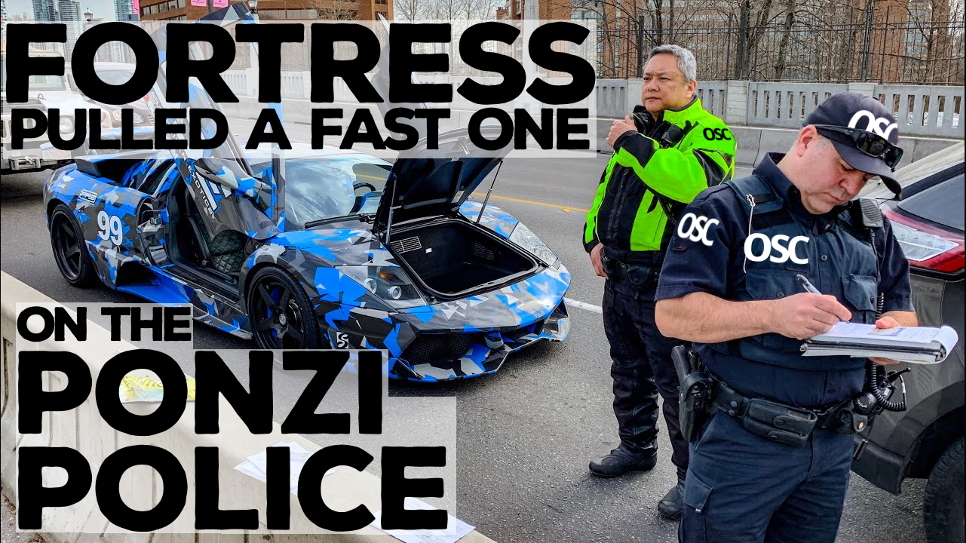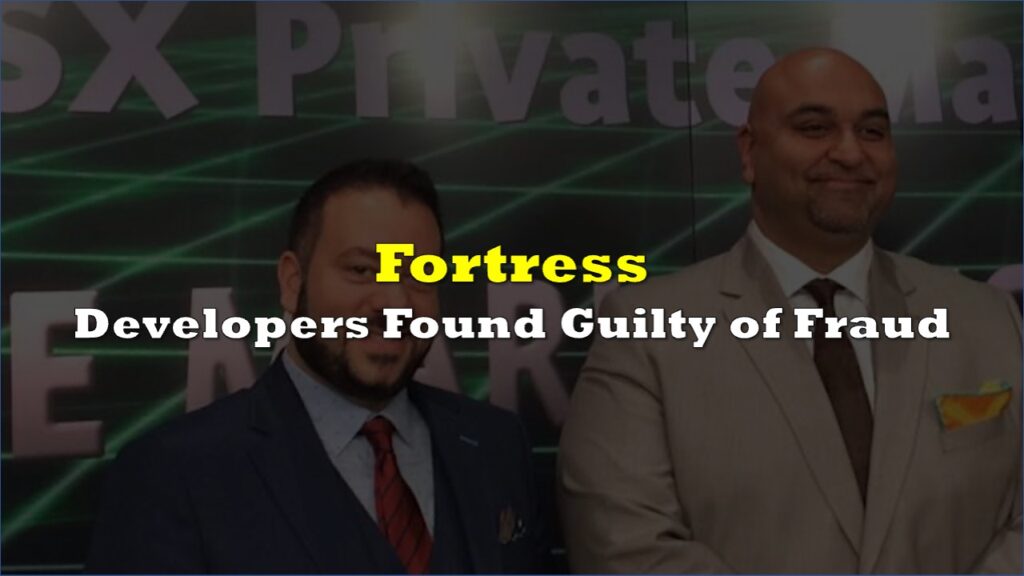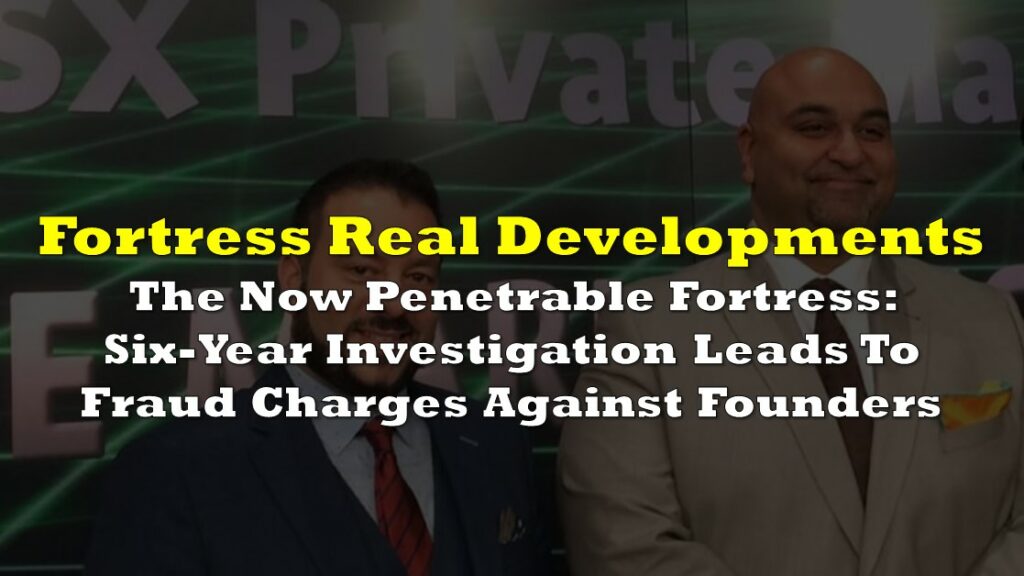This column is on record as a purist regarding the term “ponzi scheme.”
The click-hungry media has come to use it to describe any of the growing numbers of financial frauds emerging in this over-securitized economy, and even many perfectly legal high-risk investments. But we like to keep its definition to the scams that work as old man Ponzi intended.
A true ponzi scheme involves:
- the sale of a security;
- the payment of dividends, interest, or some other distribution to the security holder, either in cash or in scrip, and;
- the misrepresentation to the security holder that the distribution was the proceeds of the business they invested in.
Without #3, it isn’t a true ponzi scheme. Plenty of cashflow-negative companies borrow money to pay dividends, or pay them out of cash on hand, because failing to pay them would hurt the equity value, but those aren’t ponzi schemes, because they aren’t representing that the dividend is a profit that doesn’t exist.
Richmond Hill, Ontario-based syndicated mortgage lender Fortress Real Developments, whose principles were charged last week with various securities-related fraud offenses, is flying close to the ponzi line in a way we’ve never before seen. This company put the fact that investors’ money may be used to pay off previous investors right in the investor literature.

It’s a neat trick, because it allows the company to give its rate-junky backers the 8% return they signed up for, while it’s available, without telling a lie about where it came from… technically.
The RCMP’s charges against the Fortress principles are for fraud and paying secret commissions. The press release is light on details but an extensive investigation by real estate analyst and twitter PI Ben Rabideaux (give him a follow, folks) has Fortress lying about all sorts of securities-adjacent stuff that could constitute fraud, including the nature of the investment, the suitability of the investment, the risks carried by the investment, and the stage of the projects being built with the money invested. But, as far as we know, the Fortress principles aren’t accused of lying about where the money for the investors’ distributions came from, and the RCMP hasn’t used the P-word.
The Fortress founders had already learned their lesson on that one.
The Phoenix Fleece
In a previous venture, the accused Fortress principles, Vincenzo Petrozza and Jawad Rathore, were offering bridge loans to people who had sizeable retirement accounts, and debts that were due before the accounts were able to be unlocked. According to the Ontario Securities Commission, “Phoenix Capital Resources Inc.” had much of its business referred to it by collection agencies.
The OSC file is light on details about the victims of the 2007-2008 vintage scam, but it sounds like these were individuals whose employer-controlled pension accounts were due to become available to them upon their retirements, or some other milestone. Extending the bridge loan, sometimes as a direct payment to the collection agency, put Phoenix in a position to develop relationships with people whose savings had been managed by someone else their whole lives, just as they were about to have to manage it themselves. And, if those guys down at Phoenix were clever enough to get the collections agency off their back, they probably knew something about finance.
The Phoenix staff weren’t registered to sell securities, but that didn’t stop them from recommending that their bridge-loan clients invest the remainder of their pension accounts in two very specific oil exploration companies, or from collecting commissions for making those recommendations.
The 2011 OSC allegations that preceded a settlement with the future principles of Fortress have Phoenix clients investing $16.5 million in Great Pacific International (GPI), and OSE Corp. (OSE), a pair of oil exploration companies run by Thalbinder Poonian, who sure knew how to spread the wealth around. Poonian sold his stock into the buying Phoenix solicited from its clients, and paid around $3 million in commision to Phoenix in the process. A related BCSC investigation into Poonian has Phoenix emailing details of market buying they created in real time to arrange for the (im)proper commissions.
GPI and OSE started to shed market value under the weight of the stock Poonian and his associates were selling to the Phoenix clients, and soon became worthless. The businesses are no longer active.
The OSC doesn’t use the word “Ponzi” in the 2011 settlement agreement reached with future Fortress principles Rathore and Petrozza, and Phoenix employee Omar Maloney, but it does take care to note that there were $261,787.55 worth of checks issued by Phoenix to the investors that Phoenix funnelled into GPI and OSE, some of which were labeled “dividends.” The companies ran small oil leases, never turned any profits, and certainly never issued any dividends. The OSC levied a total of $250,000 in fines and $100,000 in costs from the three charged individuals, and another $2.7 million from Phoenix as a company, but the most interesting part here is the carve out.
The Fortress Funnel
Petrozza, Rathore and Maloney’s settlements include 15 year prohibitions from being registered to sell securities, but include explicit allowances for trading in or acquiring, “Mortgage Instruments or securities of a Closely Held Private Company.”

Mortgages make a good base for a ponzi (or ponzi-like) scheme, because they attract yield-oriented investors who are inclined to re-invest their distributions. To un-sophisticated retail investors, the notion that the distributions could be paid out of funds raised from new investors probably sounded like a sort of guarantee: that 8% was going to show up no matter what. It stands to reason that they might have to move some money around The Fortress to keep everyone paid while the deals mature. These are development-stage deals, you see. Practically ATMs once they’re operating, so there is plenty more mortgaging to be done in the later stages to pay the notes off.
But there wasn’t. The former Phoenix team had graduated from commission collector to commission contributor, so they had to use that money to pay sub-agents to launder their guarantees.







… after their end came off the top of course.

Between the fees and the distributions, there wasn’t a whole lot left over for construction.
The complaints started when the borrowers fell behind and started defaulting. It would seem as though the notion among the pool of lenders that the mortgages were safe was based mostly on Fortress’ marketing materials… and, presumably, its name. The actual mortgages being syndicated were in second position on the titles of the half-built condos and strip malls they were nominally financing; un-secured and subordinate to primary lenders. Today, all Fortress investors have left is a sob story for the CBC. And all The Dive has is questions about this carve-out.
The OSC might as well be a traffic cop
The 2011 OSC settlement agreement bans Petrozza and Rathore from dealing in investment securities for 15 years, and makes a specific exception to that ban that allows them to deal in the mortgage securities that Fortress dealt in, and in the shares of closely held private companies that Fortress was. For all practical purposes, the OSC’s work was done to limit the type of securities that this crew could use to defraud the public.

What they gave up to keep from a lifetime ban is anyone’s guess. Their cooperation may have been required for the BCSC’s Poonari/Sihota investigations, but that’s a whole different agency and, beyond the emails discussing commissions, which presumably could be acquired by subpoena, what kind of cooperation would they need?
Through a certain lens, this crew ran three jobs. The Phoenix Fleece, The Fortress Funnel, and the OSC Escape that got them from the first one to the next.
Information for this briefing was found via the OSC, the BCSC, and the sources mentioned. The author has no securities or affiliations related to this organization. Not a recommendation to buy or sell. Always do additional research and consult a professional before purchasing a security. The author holds no licenses.







